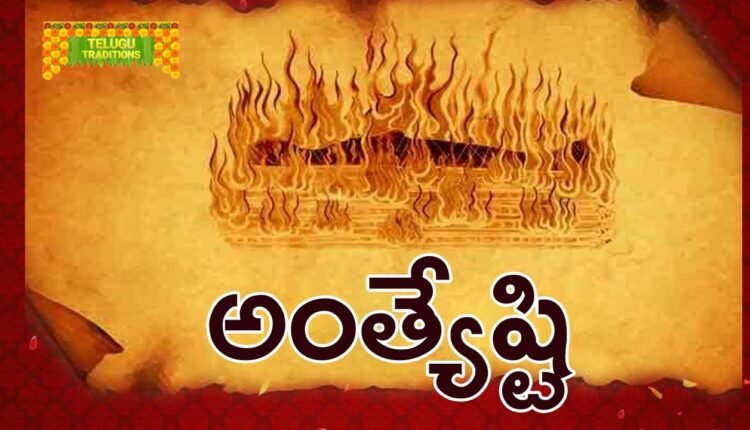Anthyesti : A Final Ceremony Performed After The Death In Hindu Tradition
Anthyesti : Also known as the last rites, is the final ceremony performed after the death of a Hindu individual. It is believed to bring peace and spiritual liberation to the departed soul. The following are the customary practices associated with Antyeshti
Preparations before Death:
- The dying person gathers their family members, relatives, and loved ones to bid them farewell and take one last look at them.
- Charity and acts of kindness are performed in the name of the dying person to bring them contentment and happiness in the afterlife.
Rituals before the Final Procession:
- Holy water, such as Tulsitirtham or Ganga water, is poured into the mouth of the dying person by their relatives.
Funeral Procession:
- Pade: A specially constructed structure called “pade” consisting of seven sticks is used to carry the corpse to the cremation ground.
- Final Yatra: Relatives and friends of the deceased participate in the final procession, accompanying the body to the burial ground.
Anustarani:
- On behalf of the deceased, a sacred cow is donated. It is believed that this act will assist the departed soul in crossing the metaphorical ocean of life.
Dimpudakallem:
- If, due to divine intervention or any other reason, a person who was believed to be dead comes back to life, the pada (structure) is momentarily placed on the ground during the procession. The deceased’s name is called three times into the ear of the body, signifying the temporary pause in the funeral proceedings.
Dahanam (Combustion):
- Before placing the body on the pyre for cremation, it is anointed with water. Vedic mantras are chanted, and the body is then set on fire.
Udakakarma:
- After the body is cremated, water (udaka) is offered to cool down the remains.
Comforting the Grieving:
- Elders in the community console and guide the grieving family members, explaining the meaning of life and sharing stories and teachings from scriptures to alleviate their sorrow.
Asaucham:
- In order to maintain purity and avoid inauspiciousness, the house where a death has occurred is left vacant for a certain period, usually a year. This period is referred to as “Sutaka Mani,” with two types: Jathashaucham (impurity due to birth) and Mritashaucham (impurity due to death).
Asthisanchayanam:
- Even after the body is cremated, some bones may remain. Asthisanchayanam is the collection of these bones from the ashes for the purpose of further rituals or immersion in a sacred body of water.
Anthyesti & Specific Practices
It is important to note that specific practices and rituals may vary across different Hindu communities and regions.
Also Read : Perini Dance : A Unique & Captivating Telugu Dance Form

